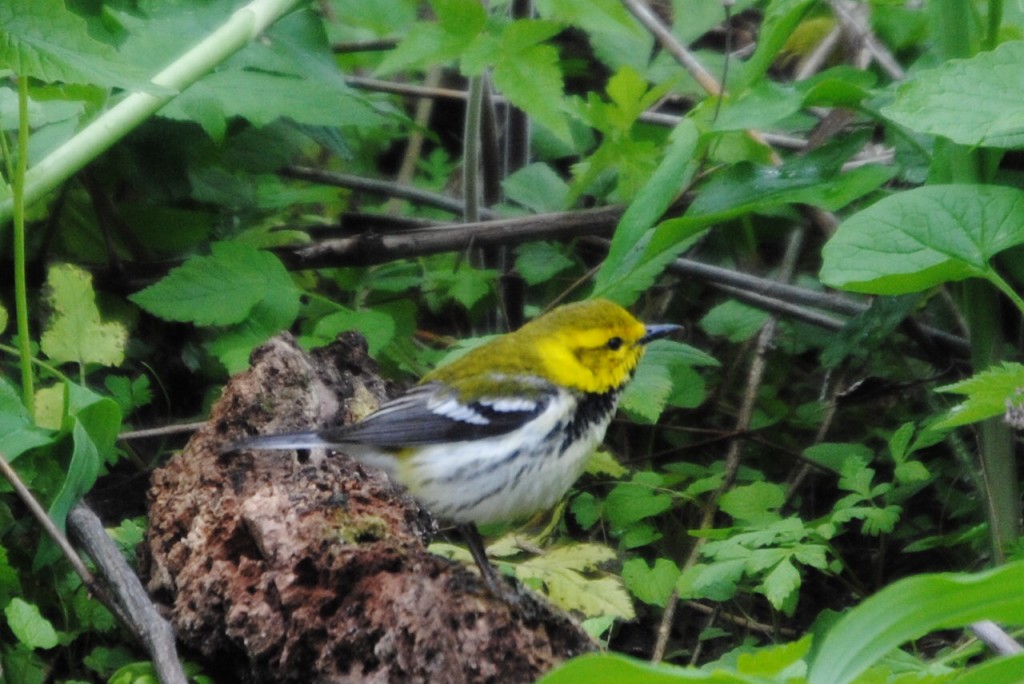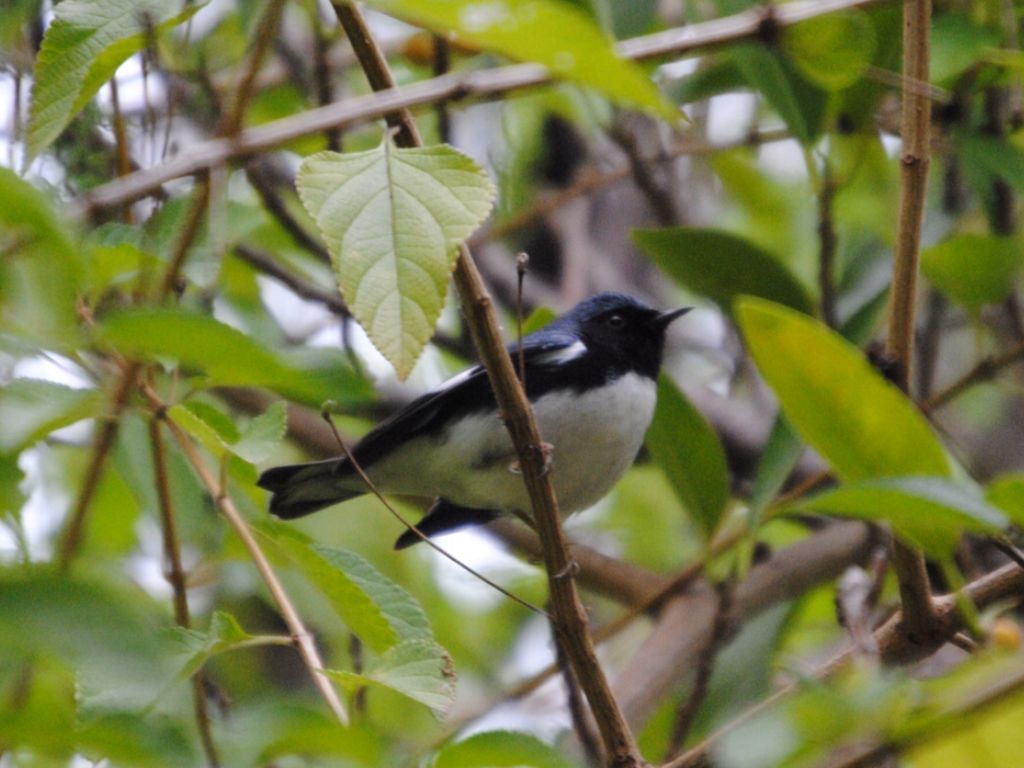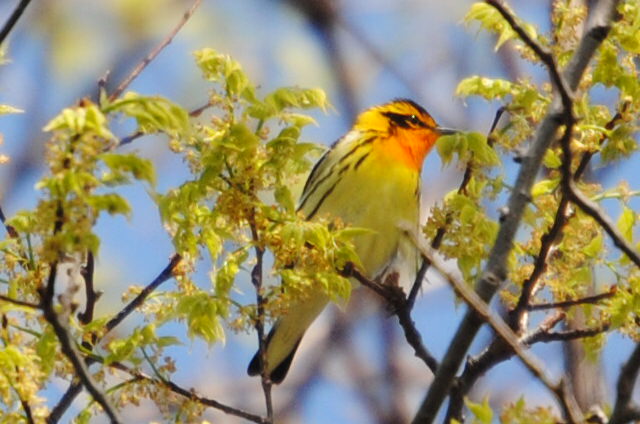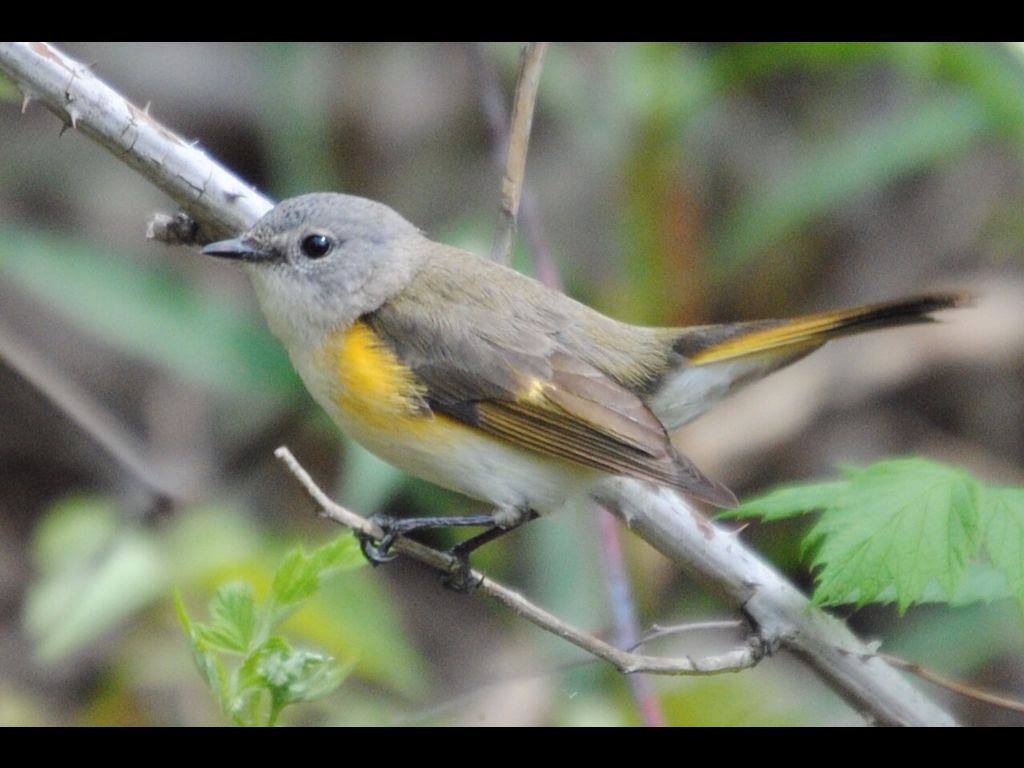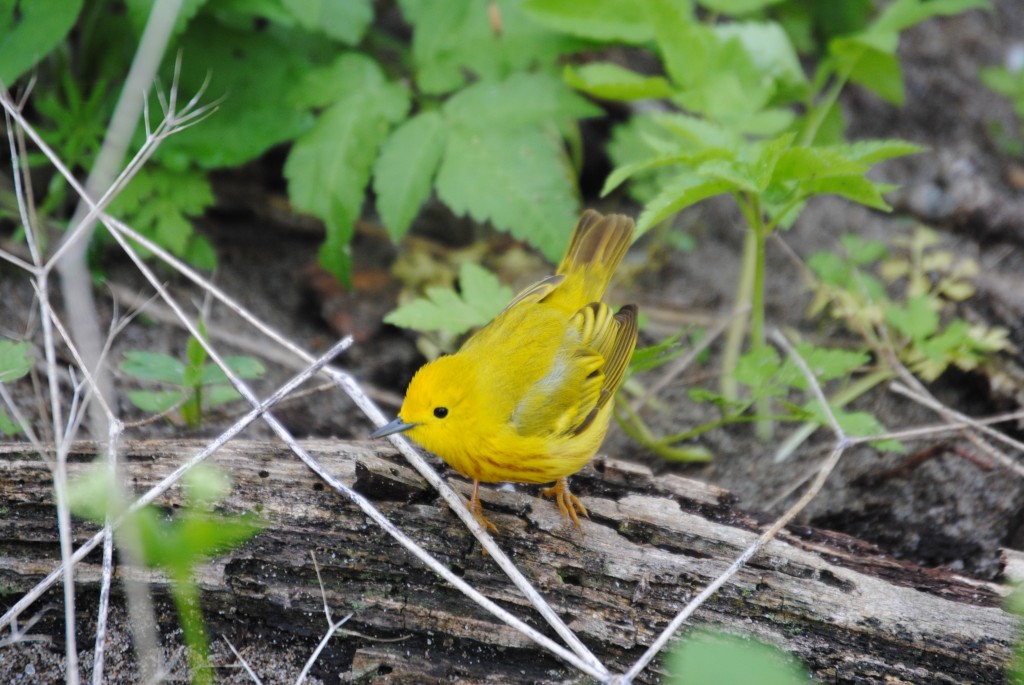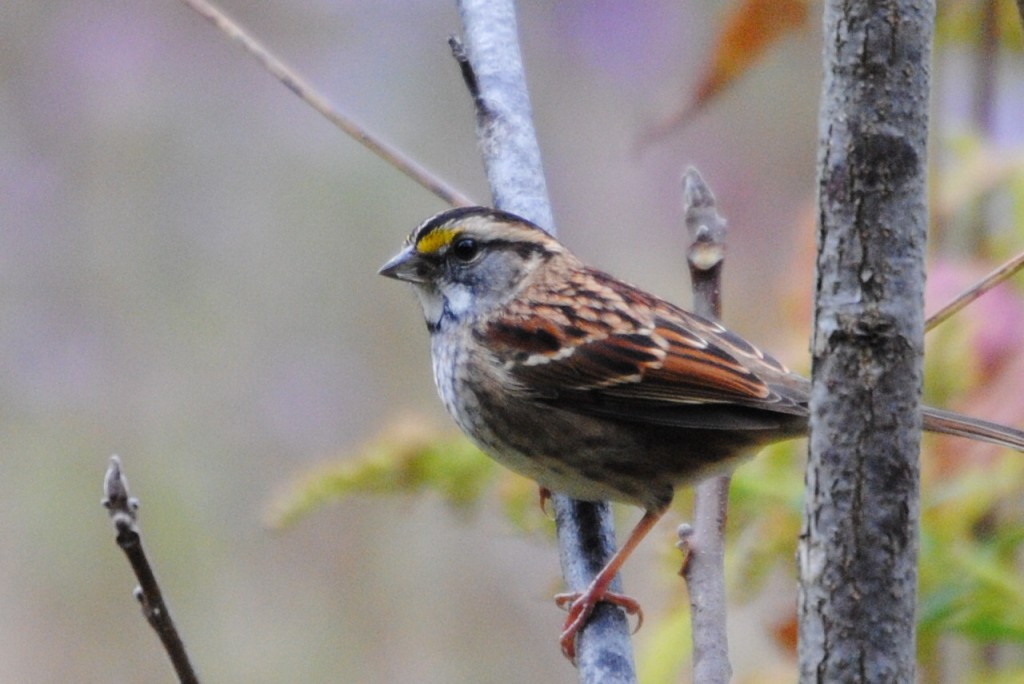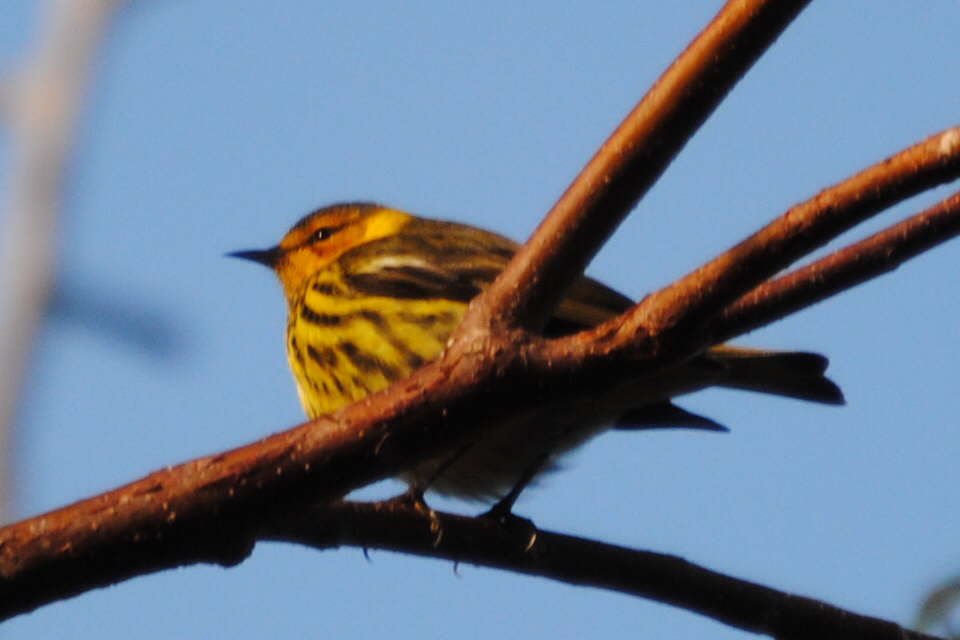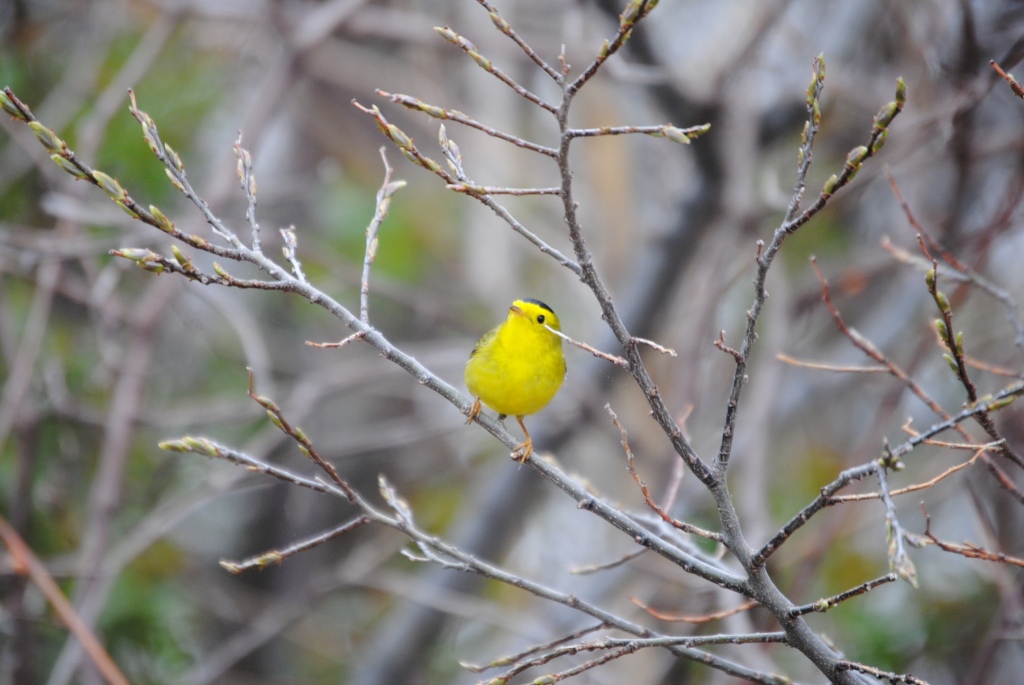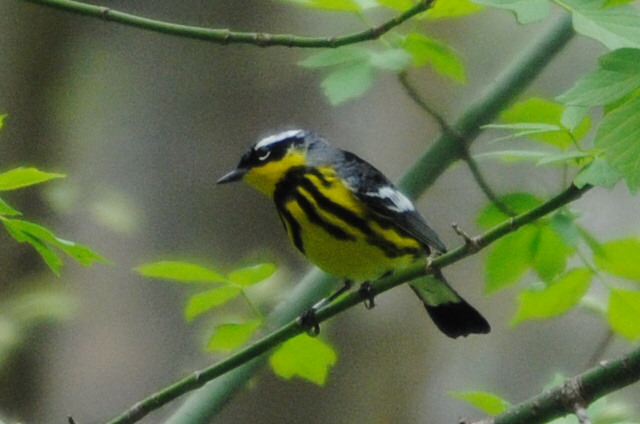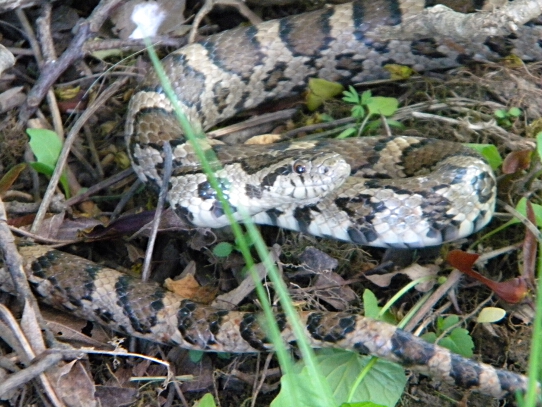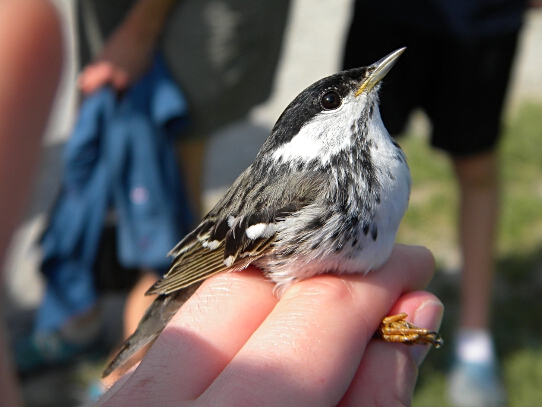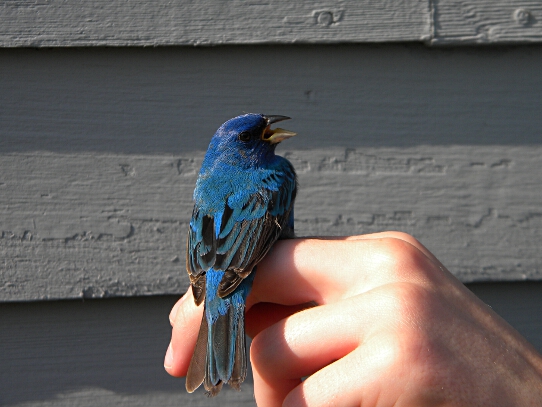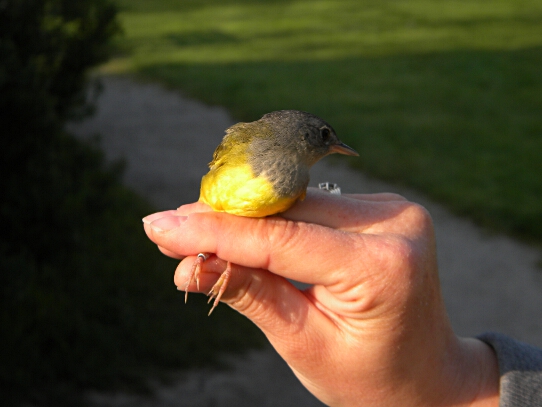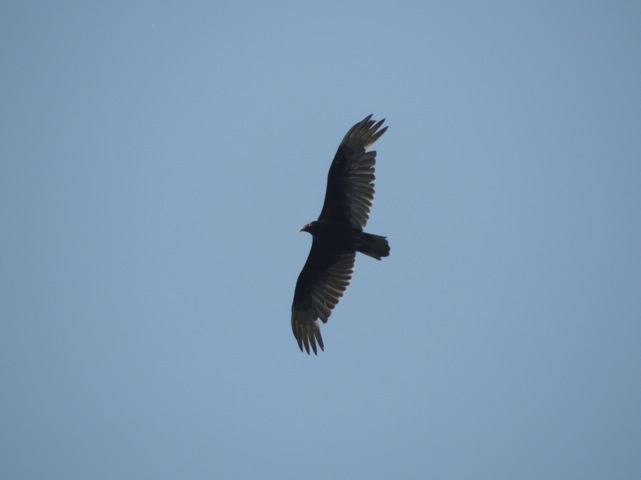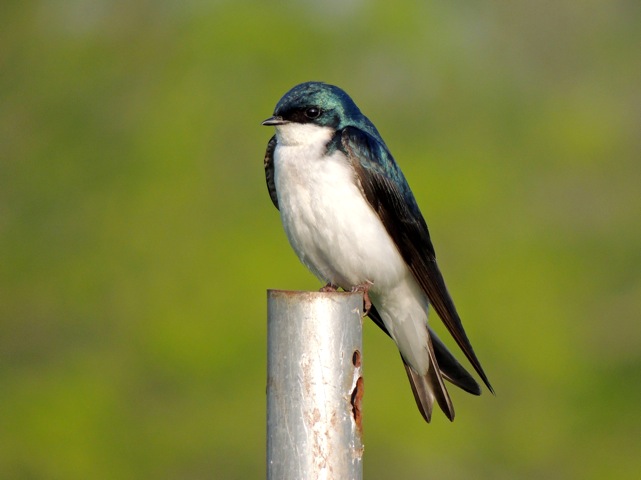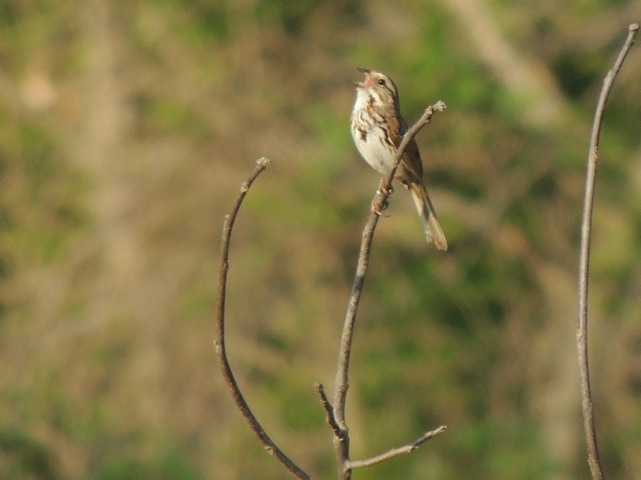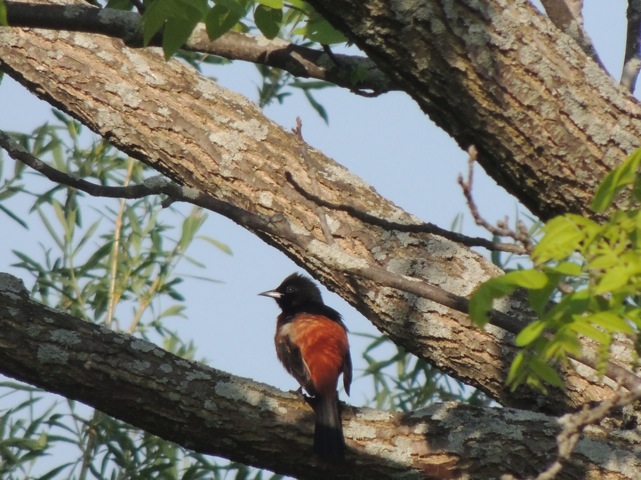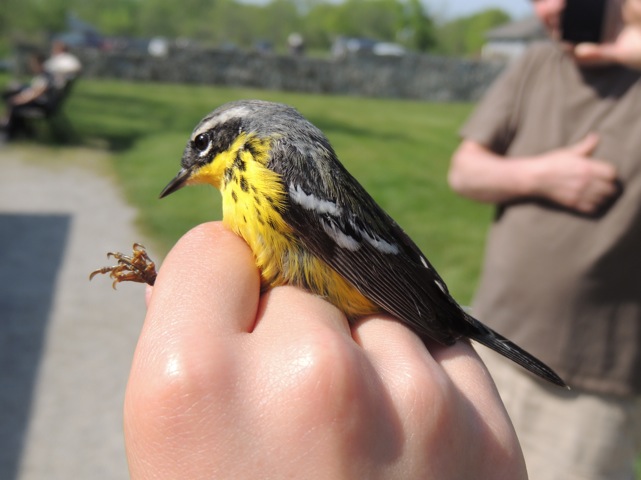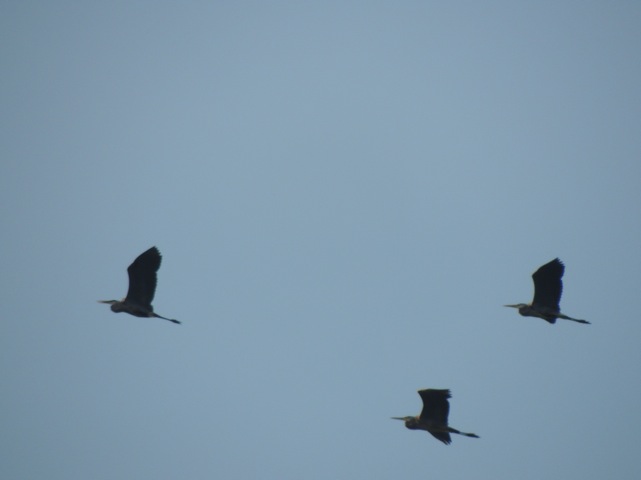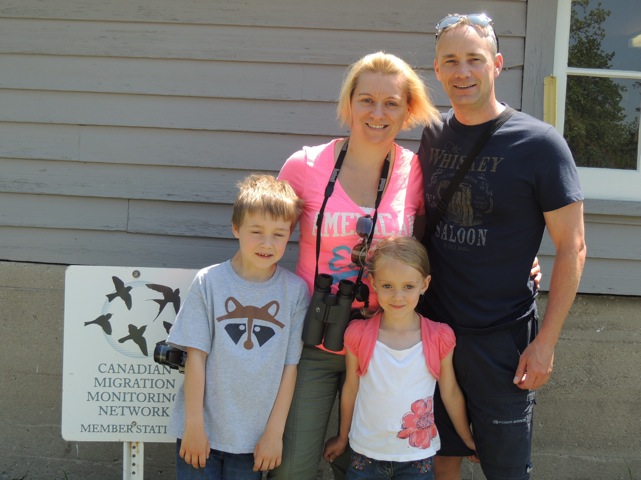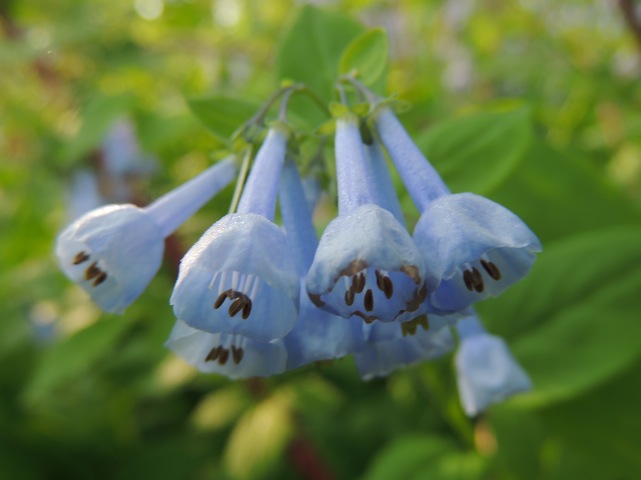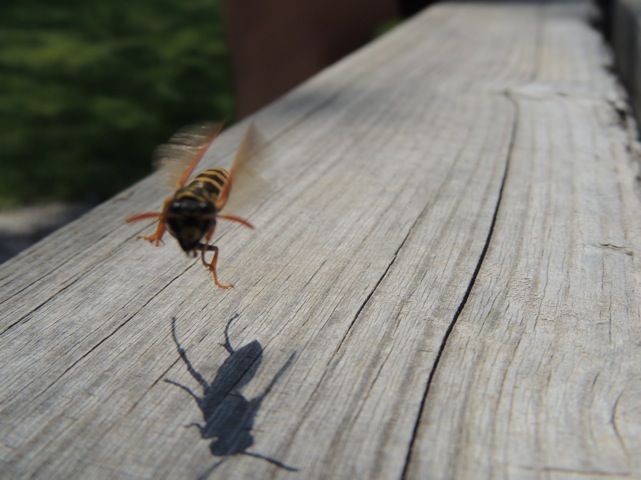
Now, it wasn’t a “slow” day by any means. After all, we banded 45 birds of 18 species (including the first Mourning Warbler of the year). But we had a whopping 69 visitors! From toddlers to (almost) geriatrics. So…every bird was appreciated and every baked good was consumed…just not by me. In fact, I got very few. But that’s beside the point.
Again, (and as usual) the early net runs were productive and interesting and it tapered off dramatically after about 8:00 AM. But it was such a nice day that between birds and net runs visitors were happy to just walk the trails or sit in the shade and talk.
The Purple Martin colony seems really solid – we counted 36 (at least) birds this morning – but Nancy and I are starting to get a little concerned with the health of the colony. The nest houses contain 48 “apartments” between the two of them but only 9 show signs of actual nest development within them. That’s only 19%. We will be watching closely to see what happens. Hopefully they’re just off to a late start….but for some reason I doubt it.
We have a number of young people associated with the lab that have been coming out for a number of years. Some of them are quite technically savvy when it comes to photography. The “Photo Gallery” tonight is fairly lengthy but is completey made up of pictures taken by these young people, all under the age of 15.
Banded 45:
1 Traill’s Flycatcher
1 House Wren
2 Wood Thrush
6 Gray Catbirds
1 Cedar Waxwing
1 Warbling Vireo
2 Tennessee Warblers
3 Yellow Warblers
3 Magnolia Warblers
1 Blackpoll Warbler
2 American Redstarts
1 Mourning Warbler
1 Common Yellowthroat
4 Rose-breasted Grosbeaks
3 Indigo Buntings
1 Song Sparrow
4 Baltimore Orioles
8 American Goldfinches
ET’s: 67 spp.
Photo Gallery:
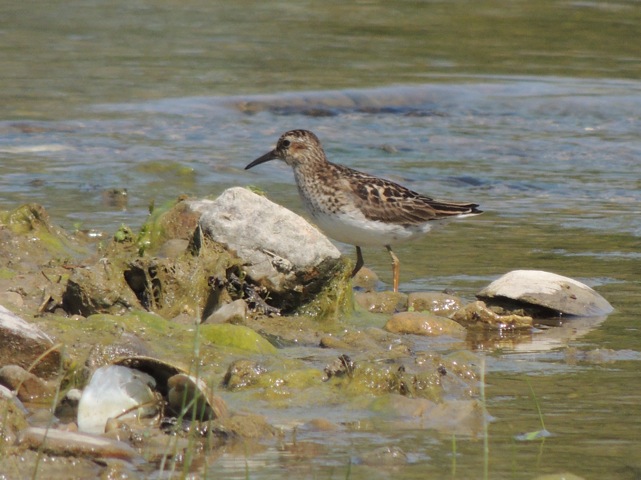
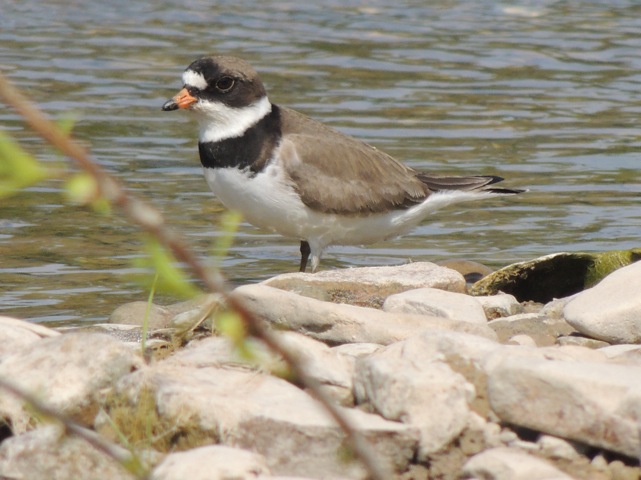
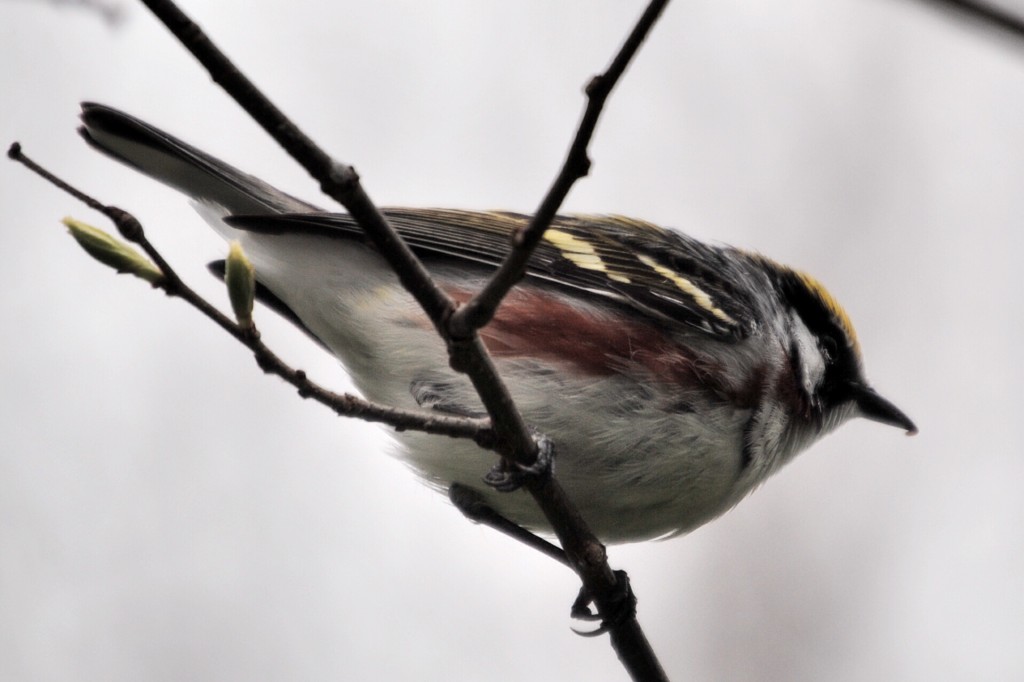
-B. Oldfield
